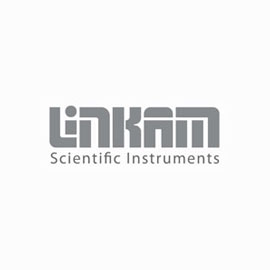The University of North Carolina Charlotte uses the Linkam high temperature TS1500 stage for research on the properties of 2D materials
Posted: 7 September 2016 | Linkam | No comments yet
Market leaders in temperature controlled microscopy, Linkam Scientific Instruments, report on the use of their high temperature TS1500 stage for research into the properties of 2D materials…


Market leaders in temperature controlled microscopy, Linkam Scientific Instruments, report on the use of their high temperature TS1500 stage for research into the properties of 2D materials.
Professor Yong Zhang is the Bissell Distinguished Professor in the Electrical and Computer Engineering Department at the University of North Carolina Charlotte (UNCC). He leads a group which studies how an epitaxial or supporting substrate can impact the material properties of a 2D material that is often presumed to have weak bonding with the substrate. In addition, they investigate a thermal activation process that requires high temperature capability. In turn, a high temperature experimental set up allows the study of thermal stability under various conditions.
Since choosing the Linkam TS1500 high temperature stage for their work, the group has used the stage multiple times to study different material systems with the goals of understanding the effects of substrate on 2D materials to reveal the intrinsic properties of the materials and control and modify them with substrate engineering. These include black phosphorus 1, monolayer molybdenum disulphide (MoS2) 2, tungsten disulphide (WS2) 3 and graphene. Other materials, such as copper-zinc-tin selenide (CZTSe), a new solar cell materialhave resulted in publications.
Professor Zhang has noted several key findings from this research. He says “We have made some important findings which are common among 2D materials. Firstly, we saw that film properties are sensitive to not only the substrate type (e.g. SiO2 vs. sapphire) but also the bonding situation (e.g. epitaxially grown vs. transferred). Second, we found that high temperature studies reveal how film morphology impacts the material properties and how morphology changes with heating. We also saw that the sensitivity of the substrate influence on the film thickness depends on the material property of interest. For instance, the effect of the substrate remains significant for thermal conductivity of the film even the film is already relatively thick, but is much less significant for electronic properties.”
To learn more about Linkam and their approach to the development of temperature stages to address multiple applications challenges, please visit www.linkam.co.uk.
References
- Su, L. & Zhang, Y. (2015). Temperature Coefficients of Phonon Frequencies & Thermal Conductivity in Thin Black Phosphorous Layers. Applied Physics Letters107 (7)
- Liqin Su, Yong Zhang, Yifei Yu and Linyou Cao, Dependence of coupling of quasi 2-D MoS2 with substrates on substrate types, probed by temperature dependent Raman scattering. Nanoscale, 2014, 6, 4920
- Su, L., Yu, Y., Cao, L. et al. Effects of substrate type and material-substrate bonding on high-temperature behavior of monolayer WS2, Nano Res. (2015) 8: 2686. doi:10.1007/s12274-015-0775-1




